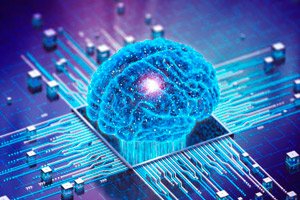
All iLive content is medically reviewed or fact checked to ensure as much factual accuracy as possible.
We have strict sourcing guidelines and only link to reputable media sites, academic research institutions and, whenever possible, medically peer reviewed studies. Note that the numbers in parentheses ([1], [2], etc.) are clickable links to these studies.
If you feel that any of our content is inaccurate, out-of-date, or otherwise questionable, please select it and press Ctrl + Enter.
Study uncovers 'molecular glue' that promotes memory formation and stabilization
Last reviewed: 02.07.2025
 ">
">Whether it’s our first visit to the zoo or the moment we learned to ride a bike, we have childhood memories that last a lifetime. But what makes these memories last so long?
A study published in the journal Science Advances by an international team of scientists has revealed the biological basis for long-term memories. The central discovery was the role of the molecule KIBRA, which acts as a “glue” for other molecules, thereby cementing the formation of memories.
“Previous attempts to understand how molecules store long-term memories have focused on the individual actions of individual molecules,” explains Andre Fenton, a professor of neuroscience at New York University and one of the lead researchers. “Our study shows how these molecules interact with each other to ensure that memories are stored permanently.”
"A better understanding of how we store our memories will help inform future efforts to study and treat memory-related disorders," adds Todd Sacktor, a professor at SUNY Downstate Health Sciences and one of the lead researchers.
It has long been known that neurons store information in patterns of strong and weak synapses, which determine the connectivity and function of neural networks. However, the molecules in synapses are unstable, constantly moving around within neurons, wearing out, and being replaced within hours or days, which begs the question: how can memories be stable over years or decades?
In the mouse model, the researchers focused on the role of KIBRA, a protein expressed in the kidneys and brain whose genetic variants are associated with both good and poor memory. They studied how KIBRA interacted with other molecules important for memory formation, in this case protein kinase Mzeta (PKMzeta). This enzyme is a key molecule for strengthening normal synapses in mammals, but it breaks down after a few days.
Experiments have shown that KIBRA is the "missing link" in long-term memories, acting as a "permanent synaptic tag" or glue that attaches to strong synapses and PKMzeta while avoiding weak synapses.
“When memory is being formed, the synapses involved in the process are activated, and KIBRA is selectively placed at those synapses,” explains Sacktor, a professor of physiology, pharmacology, anesthesiology, and neuroscience at SUNY Downstate. “PKMzeta then attaches to the KIBRA synaptic tag and keeps those synapses strong. This allows the synapses to stick to the newly formed KIBRA, attracting more newly formed PKMzeta.”
More specifically, their experiments, described in a paper in Science Advances, show that breaking the KIBRA-PKMzeta connection erases old memories.
Previous studies have shown that random increases in PKMzeta in the brain improve weak or fading memories, which was puzzling because it would act in random locations. The persistent synaptic tagging by KIBRA explains why extra PKMzeta improved memory by acting only in the locations marked by KIBRA.
"The mechanism of persistent synaptic tagging explains for the first time these findings, which have clinical implications for neurological and psychiatric memory disorders," said Fenton, who is also at the NYU Langone Medical Center's Institute of Neurosciences.
The authors of the paper note that the study confirms a concept introduced in 1984 by Francis Crick. Sacktor and Fenton point out that his hypothesis for explaining the brain's role in storing memory despite constant cellular and molecular changes is the mechanism of the "Ship of Theseus" - a philosophical argument from Greek mythology in which new planks replace old ones to support the "Ship of Theseus" over the years.
"The mechanism of persistent synaptic tagging is analogous to how new boards replace old boards to maintain the Ship of Theseus across generations, and allows memories to persist for years even as the proteins that support the memory are replaced," Sacktor says.
"Francis Crick intuitively predicted this Ship of Theseus mechanism, even predicting the role of protein kinase. But it took 40 years to discover that the components were KIBRA and PKMzeta, and to figure out the mechanism by which they interact."
